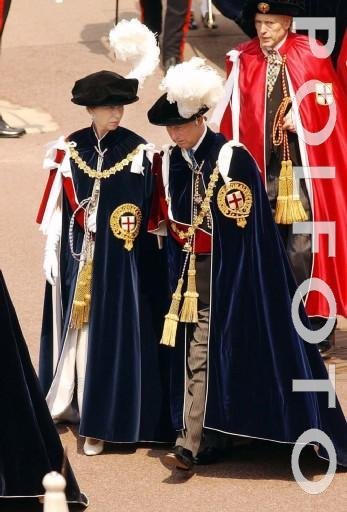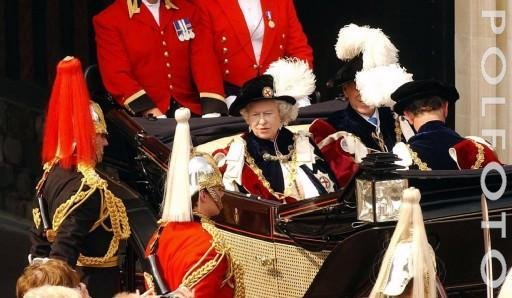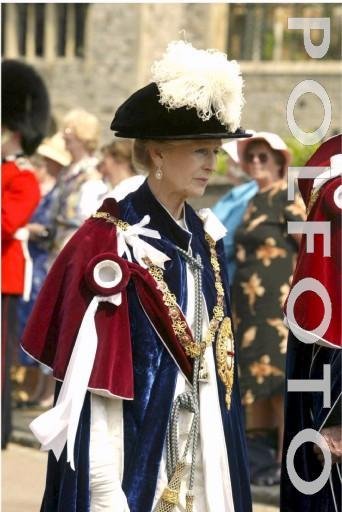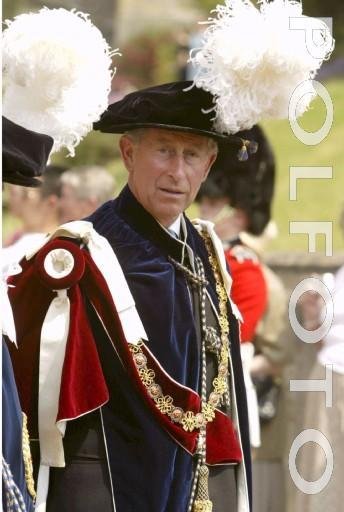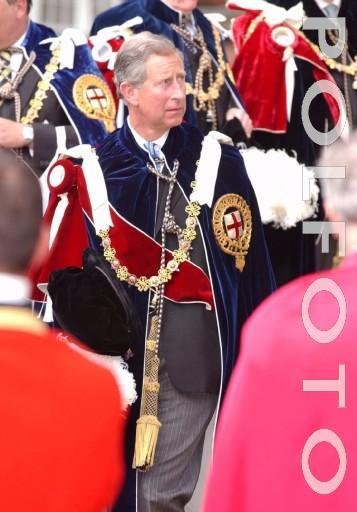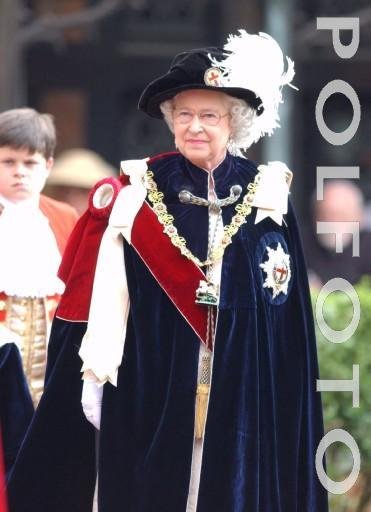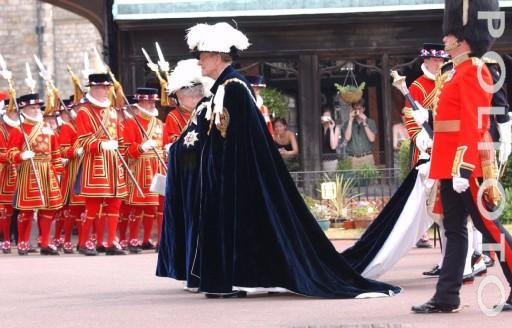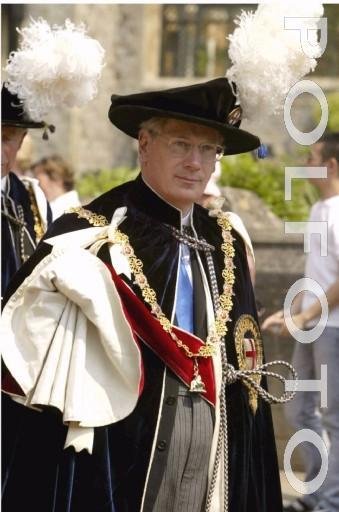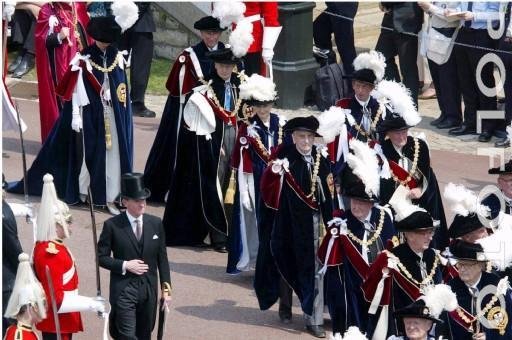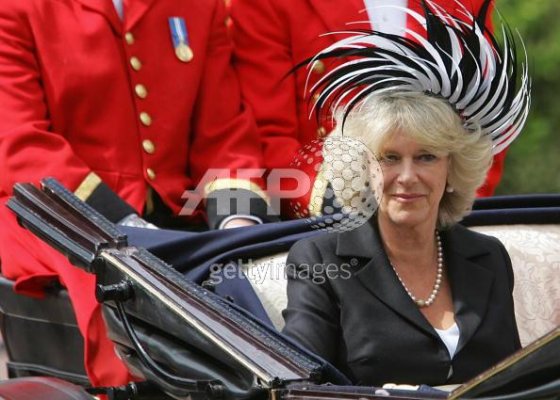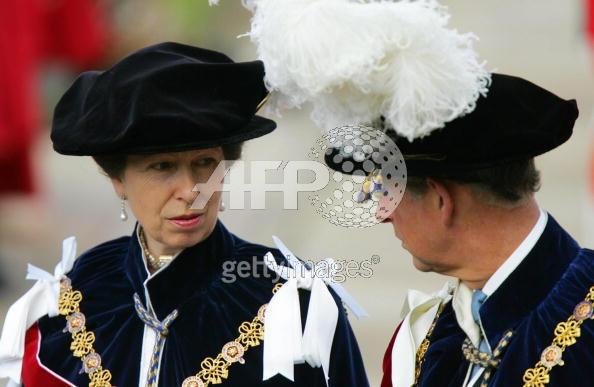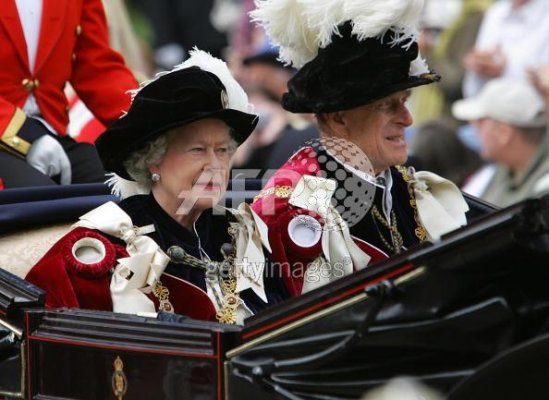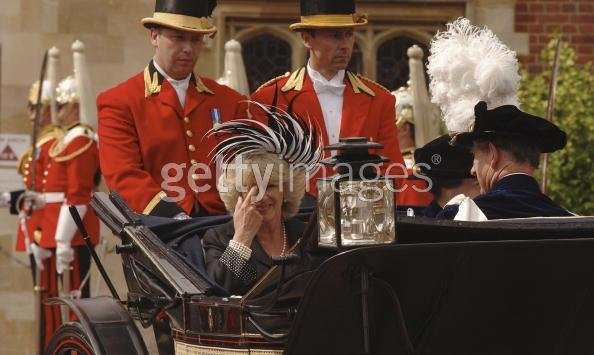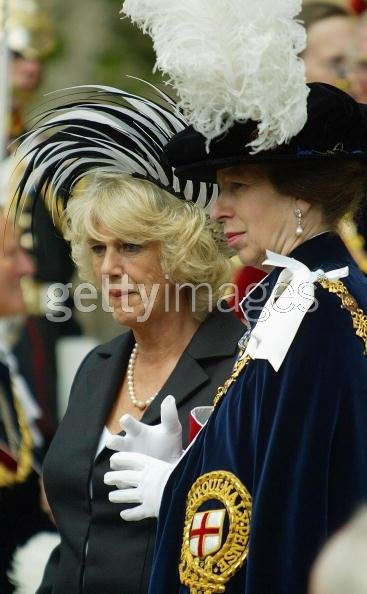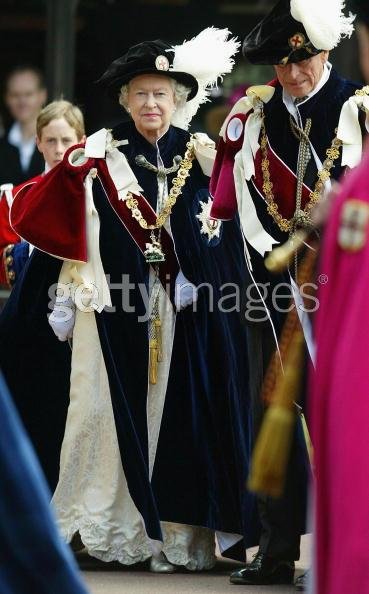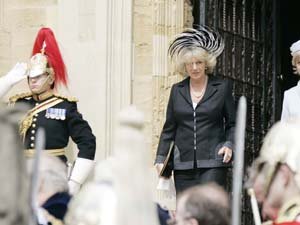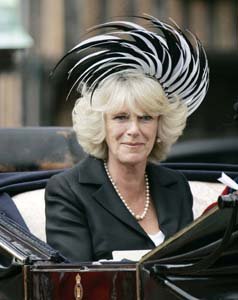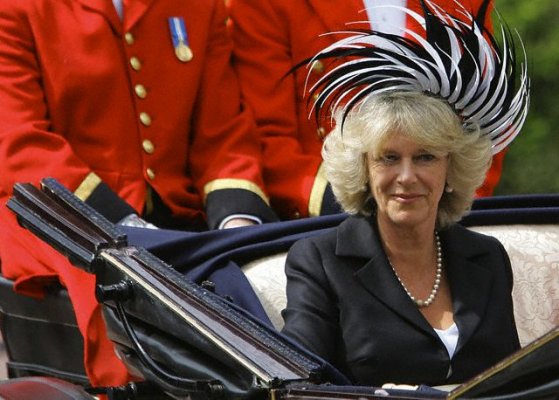ORDER OF THE GARTER
The Order of the Garter is the most senior and the oldest British Order of Chivalry and was founded by Edward III in 1348.
The Order, consisting of the King and twenty-five knights, was intended by Edward III to be reserved as the highest reward for loyalty and for military merit.
Like the Prince of Wales (the Black Prince), the other founder-knights had all served in the French campaigns of the time, including the battle of Crécy - three were foreigners who had previously sworn allegiance to the English king: four of the knights were under the age of 20 and few were much over the age of 30.
The origin of the emblem of the Order, a blue garter, is obscure. It is said to have been inspired by an incident which took place whilst the King danced with Joan, Countess of Salisbury.
The Countess's garter fell to the floor and after the King retrieved it he tied it to his own leg. Those watching this were apparently amused, but the King admonished them saying, 'Honi soit qui mal y pense' (Shame on him who thinks this evil). This then became the motto of the Order.
Modern scholars think it is more likely that the Order was inspired by the strap used to attach pieces of armour, and that the motto could well have referred to critics of Edward's claim to the throne of France.
The patron saint of the Order is St George (patron saint of soldiers and also of England) and the spiritual home of the Order is St George's Chapel, Windsor. Every knight is required to display a banner of his arms in the Chapel, together with a helmet, crest and sword and an enamelled stallplate.
These 'achievements' are taken down on the knight's death (and the insignia are returned to the Sovereign), but the stallplates remain as a memorial and these now constitute one of the finest collections of heraldry in the world.
The insignia of the Order have developed over the centuries: starting with a garter and badge depicting St George and the Dragon. A collar was added in the sixteenth century, and the star and broad riband in the seventeenth century.
Although the collar could not be decorated with precious stones (the statutes forbid it), the other insignia could be decorated according to taste and affordability. George IV, well-known for his vanity, left 55 different Garter badges of varying styles.
Over the years, a number of knights have been 'degraded' (for the crimes of heresy, treason or cowardice), the most recent example being the Duke of Ormond in 1715, or even executed - such as Lord Scrope of Masham (a childhood friend of Henry V), and the 3rd Duke of Buckingham in 1521. Charles I wore his Order (ornamented with over 400 diamonds) to his execution in 1649.
From the eighteenth century to 1946, appointments to the Order (and to the Order of the Thistle) were made on advice from government.
Today, the Order has returned to its original function as a mark of royal favour; Knights of the Garter are chosen personally by the Sovereign to honour those who have held public office, who have contributed in a particular way to national life or who have served the Sovereign personally.
The number of knights is limited to 24 plus royal knights. For much of its history, the Garter was limited to the aristocracy, but today the knights are from varied backgrounds. If there are vacancies in the Order, appointments are announced on St George's Day (23 April).
Every June, the Knights of the Garter gather at Windsor Castle, where new knights take the oath and are invested with the insignia. A lunch is given in the Waterloo Chamber, after which the knights process to a service in St George's Chapel, wearing their blue velvet robes (with the badge of the Order - St George's Cross within the Garter surrounded by radiating silver beams - on the left shoulder) and black velvet hats with white plumes.
The Queen (whose father George VI appointed her and her husband to the Order in 1947), as Sovereign of the Order, attends the service along with other members of the Royal family in the Order, including The Duke of Edinburgh, The Prince of Wales and The Princess Royal.
During the Middle Ages ladies were associated with the Order, although unlike today they did not enjoy full membership. One of the last medieval ladies to be honoured was Lady Margaret Beaufort, mother of Henry VII and grandmother of Henry VIII.
After her death in 1509 the Order remained exclusively male, except for reigning queens as Sovereign of the Order, until 1901 when Edward VII made Queen Alexandra a lady of the Order.
In 1987, The Queen decided that women should be eligible for the Garter in the same way as men. Women are therefore included in this number and currently Lady Thatcher (formerly Margaret Thatcher, first female prime minister of Great Britain) and Lady Soames (the youngest daughter of Sir Winston Churchill, also a holder of the Order of the Garter) hold this honour.
Since the early fourteenth century, foreign monarchs have been appointed to the Order, as a means of marking and securing alliances - one of the earliest such appointments was that of the Duke of Urbino by Edward IV in 1474.
Such appointments were and are occasionally made to non-Christian rulers (for example, the Shah of Persia in 1902), which prompted some debate over removing Christian imagery (the cross of St George) from the Order when it is given to non-Christian recipients; in the end, the design remained unchanged.
Foreign monarchs in the Order are known as 'Stranger Knights'. These knights are in addition to the number allowed by statute, and they include the kings of Spain and Sweden and the emperor of Japan.


